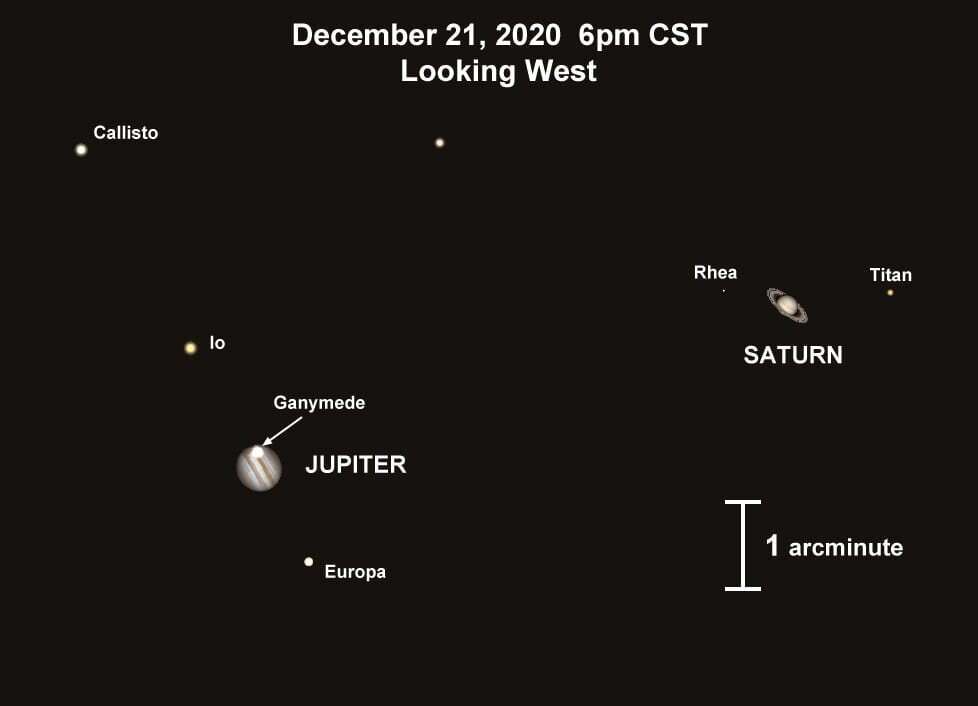
Immediately after sunset on the evening of December 21, Jupiter and Saturn will be in the night sky closer to each other than ever since the Middle Ages, and amateur astronomers around the world will have a unique opportunity to observe this curious and extremely rare astronomical configuration on the eve of the winter solstice.
“The junctions of these two planets are extremely rare, but this particular junction is particularly rare because the planets will be very close to each other,” said Patrick Hartigan, an astronomer at Rice University, USA. “In order to observe a closer junction of these planets in the night sky, we would have to return in March 4, 1226.”
Jupiter and Saturn approach each other in the night sky, starting last summer. Between December 16 and 25, these planets will be separated by a distance not exceeding the diameter of the full moon.
“On the evening of the maximum approach of the planets on December 21, they will look like a twin planet, separated by a distance of less than 1/5 of the diameter of the full moon,” said Hartigan, a professor of physics and astronomy. “For most amateur astronomers observing the night sky in a telescope, both planets and several of their largest satellites will be in the same field of view this evening.”
Although the best conditions for observing this compound of planets are predicted at equatorial latitudes, the event will be observed from anywhere on the Earth’s surface under favorable weather conditions. Hartigan noted that this “planet duet” will be observed low in the western sky for about one hour after sunset every evening.
Those who want to see Jupiter and Saturn converge in the sky as close, but at the same time they will be above the horizon, will have to wait until March 15, 2080, Hartigan said. After that, a similar configuration for this planet pair will not be observed until 2400.




